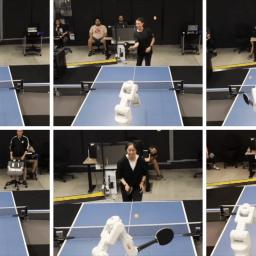 |
by Rhiannon Williams on (#6PVM6)
This is today's edition ofThe Download,our weekday newsletter that provides a daily dose of what's going on in the world of technology. Google DeepMind trained a robot to beat humans at table tennis What's new: Google DeepMind has trained a robot to play table tennis at the equivalent of amateur-level competitive performance, the company has...
|
MIT Technology Review
| Link | https://www.technologyreview.com/ |
| Feed | https://www.technologyreview.com/stories.rss |
| Updated | 2025-12-19 07:18 |
 |
by Rhiannon Williams on (#6PVHC)
Do you fancy your chances of beating a robot at a game of table tennis? Google DeepMind has trained a robot to play the game at the equivalent of amateur-level competitive performance, the company has announced. It claims it's the first time a robot has been taught to play a sport with humans at a...
|
 |
by Sarah Ward on (#6PVHD)
More people are traveling to space, but the International Space Station can only hold 11 people at a time. Aurelia Institute, a nonprofit space architecture lab based in Cambridge, MA, has an approach that may help: a habitat that can be launched in compact stacks of flat tiles and self-assemble in orbit. Building large space...
|
 |
by Jessica Hamzelou on (#6PVHE)
This article first appeared in The Checkup,MIT Technology Review'sweekly biotech newsletter. To receive it in your inbox every Thursday, and read articles like this first,sign up here. What does a thought look like? We can think about thoughts resulting from shared signals between some of the billions of neurons in our brains. Various chemicals are...
|
 |
by MIT Technology Review Insights on (#6PTRG)
For many years now, cloud solutions have helped organizations streamline their operations, increase their scalability, and reduce costs. Yet, enterprise cloud investment has been fragmented, often lacking a coherent organization-wide approach. In fact, it's not uncommon for various teams across an organization to have spun up their own cloud projects, adopting a wide variety of...
|
 |
by Rhiannon Williams on (#6PTRF)
This is today's edition ofThe Download,our weekday newsletter that provides a daily dose of what's going on in the world of technology. Your AC habits aren't unique. Here's why that's a problem. -Casey Crownhart When I get home in the evening on a sweltering summer day, the first thing I do is crank up my...
|
 |
by Rhiannon Williams on (#6PSTE)
This is today's edition ofThe Download,our weekday newsletter that provides a daily dose of what's going on in the world of technology. How covid conspiracies led to an alarming resurgence in AIDS denialism Several million people were listening in February when Joe Rogan falsely declared that party drugs" were an important factor in AIDS." His...
|
 |
by Zeyi Yang on (#6PSRD)
This story first appeared in China Report, MIT Technology Review's newsletter about technology in China.Sign upto receive it in your inbox every Tuesday. There's a decent chance you've heard of hydrogen-powered vehicles but never seen one. Over 18,000 are in the US, almost exclusively in California. On the outside they look just like traditional vehicles,...
|
 |
by Anna Merlan on (#6PSP9)
Several million people were listening in February when Joe Rogan falsely declared that party drugs" were an important factor in AIDS." His guest on The Joe Rogan Experience, the former evolutionary biology professor turned contrarian podcaster Bret Weinstein, agreed with him: The evidence" that AIDS is not caused by HIV is, he said, surprisingly compelling."...
|
 |
by Melissa Heikkilä on (#6PSKJ)
Yoshua Bengio, a Turing Award winner who is considered one of the godfathers" of modern AI, is throwing his weight behind a project funded by the UK government to embed safety mechanisms into AI systems. The project, called Safeguarded AI, aims to build an AI system that can check whether other AI systems deployed in...
|
 |
by Rhiannon Williams on (#6PRWZ)
This is today's edition ofThe Download,our weekday newsletter that provides a daily dose of what's going on in the world of technology. Your future air conditioner might act like a battery Cooling represents 20% of global electricity demand in buildings, a share that's expected to rise as the planet warms and more of the world...
|
 |
by Melissa Heikkilä on (#6PRV5)
This story originally appeared in The Algorithm, our weekly newsletter on AI. To get stories like this in your inbox first, sign up here. It's the Taylor Swifts of the world that are going to save us. In January,nude deepfakes of Taylor Swift went viralon X, which caused public outrage. Nonconsensual explicit deepfakes are one...
|
 |
by Charlotte Jee on (#6PR3Y)
This is today's edition ofThe Download,our weekday newsletter that provides a daily dose of what's going on in the world of technology. We need to prepare for addictive intelligence' -By Robert Mahari, a joint JD-PhD candidate at the MIT Media Lab and Harvard Law School whose work focuses on computational law, and Pat Pataranutaporn, a...
|
 |
by Robert Mahari, Pat Pataranutaporn on (#6PR09)
AI concerns overemphasize harms arising from subversion rather than seduction. Worries about AI often imagine doomsday scenarios where systems escape human control or even understanding. Short of those nightmares, there are nearer-term harms we should take seriously: that AI could jeopardize public discourse through misinformation; cement biases in loan decisions, judging or hiring; or disrupt...
|
 |
by Zeyi Yang on (#6PR08)
If you are in China and looking to ride a shared bike in the city, you might find something on the bike that looks a little different: a water-bottle-size hydrogen tank. At least a dozen cities in China now have some kind of hydrogen-powered shared bikes for their residents. They offer an easier ride than...
|
 |
by Rhiannon Williams on (#6PP92)
This is today's edition ofThe Download,our weekday newsletter that provides a daily dose of what's going on in the world of technology. A personalized AI tool might help some reach end-of-life decisions-but it won't suit everyone -Jessica Hamzelou This week, I've been working on a piece about an AI-based tool that could help guide end-of-life...
|
 |
by Rhiannon Williams on (#6PNC7)
This is today's edition ofThe Download,our weekday newsletter that provides a daily dose of what's going on in the world of technology. End of life decisions are difficult and distressing. Could AI help? End-of-life decisions can be extremely upsetting for surrogates-the people who have to make those calls on behalf of another person. Friends or...
|
 |
by Jessica Hamzelou on (#6PN9S)
A few months ago, a woman in her mid-50s-let's call her Sophie-experienced a hemorrhagic stroke. Her brain started to bleed. She underwent brain surgery, but her heart stopped beating. Sophie's ordeal left her with significant brain damage. She was unresponsive; she couldn't squeeze her fingers or open her eyes when asked, and she didn't flinch...
|
 |
by Casey Crownhart on (#6PN9T)
This article is from The Spark, MIT Technology Review's weekly climate newsletter. To receive it in your inbox every Wednesday, sign up here. Talking about money can be difficult, but it's a crucial piece of the puzzle when it comes to climate tech. I've been thinking more about the financial piece of climate innovation since...
|
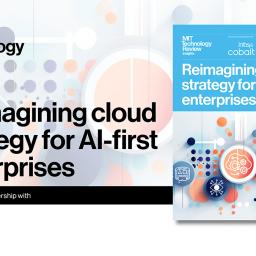 |
by MIT Technology Review Insights on (#6PMFV)
The rise of generative artificial intelligence (AI), natural language processing, and computer vision has sparked lofty predictions: AI will revolutionize business operations, transform the nature of knowledge work, and boost companies' bottom lines and the larger global economy by trillions of dollars. Executives and technology leaders are eager to see these promises realized, and many...
|
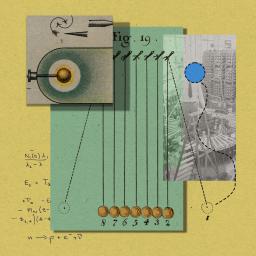 |
by Rhiannon Williams on (#6PMD8)
This is today's edition ofThe Download,our weekday newsletter that provides a daily dose of what's going on in the world of technology. The US physics community is not done working on trust -Frances Houle, Kate Kirby, Laura Greene & Michael Marder In April 2024, Nature released detailed information about investigations into claims made by Ranga...
|
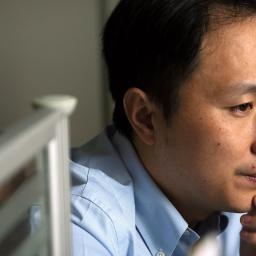 |
by Zeyi Yang on (#6PMAQ)
This story first appeared in China Report, MIT Technology Review's newsletter about technology in China.Sign upto receive it in your inbox every Tuesday. Back in 2018, it was my colleague Antonio Regalado, senior editor for biomedicine, who broke the story that a Chinese scientist named He Jiankui had used CRISPR to edit the genes of...
|
 |
by Frances Houle, Kate Kirby, Laura Greene, Michael M on (#6PM8Q)
In April 2024, Nature released detailed information about investigations into claims made by Ranga Dias, a physicist at the University of Rochester, in two high-profile papers the journal had published about the discovery of room-temperature superconductivity. Those two papers, which showed evidence of fabricated data, were eventually retracted, along with other papers from the Dias...
|
 |
by Melissa Heikkilä on (#6PKTH)
OpenAI is rolling out an advanced AI chatbot that you can talk to. It's available today-at least for some. The new chatbot represents OpenAI's push into a new generation of AI-powered voice assistants in the vein of Siri and Alexa, but with far more capabilities to enable more natural, fluent conversations. It is a step...
|
 |
by Rhiannon Williams on (#6PKH2)
This is today's edition of The Download, our weekday newsletter that provides a daily dose of what's going on in the world of technology. How the US and its allies can rebuild economic security -Edlyn V. Levine is CEO and co-founder of a stealth-mode technology start up and an affiliate at MIT Sloan School of...
|
 |
by Edlyn V. Levine, Fiona Murray on (#6PKD0)
A country's economic security-its ability to generate both national security and economic prosperity-is grounded in it having significant technological capabilities that outpace those of its adversaries and complement those of its allies. Though this is a principle well known throughout history, the move over the last few decades toward globalization and offshoring of technologically advanced...
|
 |
by Melissa Heikkilä on (#6PKD1)
This story originally appeared in The Algorithm, our weekly newsletter on AI. To get stories like this in your inbox first, sign up here. It's been another big week in AI. Meta updated its powerful new Llama model, which it's handing out for free, and OpenAI said it is going to trial an AI-powered online...
|
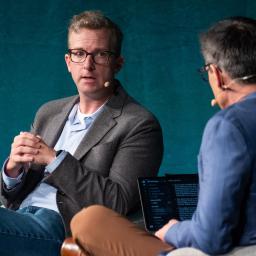 |
by Rhiannon Williams on (#6PJMW)
This is today's edition ofThe Download,our weekday newsletter that provides a daily dose of what's going on in the world of technology. Controversial CRISPR scientist promises no more gene-edited babies" until society comes around He Jiankui, the Chinese biophysicist whose controversial 2018 experiment led to the birth of three gene-edited children, says he's returned to...
|
 |
by James Temple on (#6PJGA)
As the pandemic locked down cities in early 2020, Mike Schroepfer, then the chief technology officer of Meta, found himself with more free time than he'd ever had in his career. In quiet moments that would have been filled with work travel, social events, or his children's school activities, he reflected on how well humanity...
|
 |
by Antonio Regalado on (#6PH1Q)
He Jiankui, the Chinese biophysicist whose controversial 2018 experiment led to the birth of three gene-edited children, says he's returned to work on the concept of altering the DNA of people at conception, but with a difference. This time around, he says, he will restrict his research to animals and nonviable human embryos. He will...
|
 |
by Jessica Hamzelou on (#6PGMC)
This article first appeared in The Checkup,MIT Technology Review'sweekly biotech newsletter. To receive it in your inbox every Thursday, and read articles like this first,sign up here. What does the genome do? You might have heard that it is a blueprint for an organism. Or that it's a bit like a recipe. But building an...
|
 |
by MIT Technology Review on (#6PG3F)
Recorded on July 25, 2024 CRISPR Babies: Six years later Speakers: He Jiankui, CRISPR Pioneer, Antonio Regalado, senior editor for biomedicine, and Mat Honan, editor in chief Gene editing can correct or improve the DNA of human embryos, essentially opening the door to technological evolution" of our species. But in 2018, a premature attempt to...
|
 |
by Melissa Heikkilä on (#6PG03)
Since the beginning of the generative AI boom, content creators have argued that their work has been scraped into AI models without their consent. But until now, it has been difficult to know whether specific text has actually been used in a training data set. Now they have a new way to prove it: copyright...
|
 |
by Rhiannon Williams on (#6PG04)
AI models can easily generate essays and other types of text. However, they're nowhere near as good at solving math problems, which tend to involve logical reasoning-something that's beyond the capabilities of most current AI systems. But that may finally be changing. Google DeepMind says it has trained two specialized AI systems to solve complex...
|
 |
by James Temple on (#6PFWY)
The US is continuing its decades-long effort to commercialize a technology that converts sunlight into heat, funding a series of new projects using that energy to brew beer, produce low-carbon fuels, or keep grids running. On July 25, the Department of Energy will announce it is putting $33 million into nine pilot or demonstration projects...
|
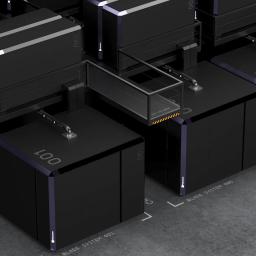 |
by Rhiannon Williams on (#6PFT4)
This is today's edition ofThe Download,our weekday newsletter that provides a daily dose of what's going on in the world of technology. PsiQuantum plans to build the biggest quantum computing facility in the US Quantum computing firm PsiQuantum is partnering with universities and a national lab to build the largest US-based quantum computing facility in...
|
 |
by Sarah Ward on (#6PFNM)
The quantum computing firm PsiQuantum is partnering with the state of Illinois to build the largest US-based quantum computing facility, the company announced today. The firm, which has headquarters in California, says it aims to house a quantum computer containing up to 1 million quantum bits, or qubits, within the next 10 years. At the...
|
 |
by Casey Crownhart on (#6PFNN)
This article is from The Spark, MIT Technology Review's weekly climate newsletter. To receive it in your inbox every Wednesday, sign up here. Truckers have to transport massive loads long distances, every single day, under intense time pressure-and they rely on the semi-trucks they drive to get the job done. Their diesel engines spew not...
|
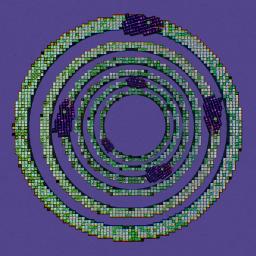 |
by Scott J Mulligan on (#6PEXD)
AI models work by training on huge swaths of data from the internet. But as AI is increasingly being used to pump out web pages filled with junk content, that process is in danger of being undermined. New research published in Nature shows that the quality of the model's output gradually degrades when AI trains...
|
 |
by Rhiannon Williams on (#6PET8)
This is today's edition ofThe Download,our weekday newsletter that provides a daily dose of what's going on in the world of technology. How to access Chinese LLM chatbots across the world Hundreds of Chinese large language models have been released since the government started permitting AI companies to open up their models for the general...
|
 |
by Casey Crownhart on (#6PENY)
Semi-trucks move over 11 billion tons of freight in the US each year, spewing greenhouse-gas emissions and other pollutants along the highways as they go. Shifting these and other heavy-duty trucks to zero-emissions technologies will be a challenge-even more so than for smaller vehicles, since larger vehicles require bigger batteries and more powerful chargers. One...
|
 |
by Zeyi Yang on (#6PENX)
This story first appeared in China Report, MIT Technology Review's newsletter about technology in China.Sign upto receive it in your inbox every Tuesday. I've talked a lot about Chinese large language models in this newsletter, and I've managed to try out quite a few of them in the past year. But many people, especially those...
|
 |
by Rhiannon Williams on (#6PDTG)
This is today's edition ofThe Download,our weekday newsletter that provides a daily dose of what's going on in the world of technology. AI companies promised to self-regulate one year ago. What's changed? One year ago, seven leading AI companies-Amazon, Anthropic, Google, Inflection, Meta, Microsoft, and OpenAI-committed with the White House to a set voluntary commitments...
|
 |
by Melissa Heikkilä on (#6PDP7)
This story originally appeared in The Algorithm, our weekly newsletter on AI. To get stories like this in your inbox first, sign up here. Yesterday, on July 21, President Joe Biden announced he is stepping down from the race against Donald Trump in the US presidential election. But AI nerds may remember that exactly a...
|
 |
by Zeyi Yang on (#6PDP8)
MIT Technology Review'sHow Toseries helps you get things done. Hundreds of Chinese large language models have been released since the government started permitting AI companies to open up their models for the general public to play around with in the summer of 2023. For users in the West, finding these Chinese models and trying them...
|
 |
by Melissa Heikkilä on (#6PD6W)
One year ago, on July 21, 2023, seven leading AI companies-Amazon, Anthropic, Google, Inflection, Meta, Microsoft, and OpenAI-committed with the White House to a set of eight voluntary commitments on how to develop AI in a safe and trustworthy way. These included promises to do things like improve the testing and transparency around AI systems,...
|
 |
by James O'Donnell on (#6PD3V)
Researchers from Google have built a new weather prediction model that combines machine learning with more conventional techniques, potentially yielding accurate forecasts at a fraction of the current cost. The model, called NeuralGCM and described in a paper in Nature today, bridges a divide that's grown among weather prediction experts in the last several years....
|
 |
by Rhiannon Williams on (#6PCYY)
This is today's edition ofThe Download,our weekday newsletter that provides a daily dose of what's going on in the world of technology. The terrible complexity of technological problems The philosopher Karl Popper once argued that there are two kinds of problems in the world: clock problems and cloud problems. As the metaphor suggests, clock problems...
|
 |
by Jessica Hamzelou on (#6PB2E)
This article first appeared in The Checkup,MIT Technology Review'sweekly biotech newsletter. To receive it in your inbox every Thursday, and read articles like this first,sign up here. A couple of years ago, I spat into a little plastic tube, stuck it in the post, and waited for a company to analyze markers on my DNA...
|
 |
by Sarah Scoles on (#6PB2D)
This August, strange balloons will drift high above Colorado. These airy aircraft, launched from the back of a pickup truck, will be equipped with sensors that can measure heat on the ground, pinpointing new wildfire outbreaks from above. The company behind the balloons, called Urban Sky, also plans to use them to understand conditions on...
|